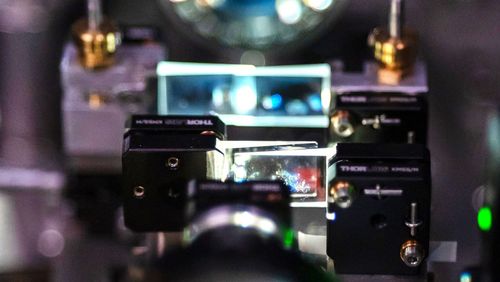Wormholes are hypothetical shortcuts between two distant points in space. In a new theory, Oldenburg physicists show that microscopic, traversable wormholes could exist without having to rely on exotic matter or a new theory of gravity.
Wormholes play a key role in many science fiction films – often as a shortcut between two distant points in space. In physics, however, these tunnels in spacetime have remained purely hypothetical. An international team led by Dr. Jose Luis Blázquez-Salcedo of the University of Oldenburg has now presented a new theoretical model in the science journal Physical Review Letters that makes microscopic wormholes seem less far-fetched than in previous theories.
Wormholes, like black holes, appear in the equations of Albert Einstein's general theory of relativity, published in 1916. An important postulate of Einstein's theory is that the universe has four dimensions – three spatial dimensions and time as the fourth dimension. Together they form what is known as spacetime, and spacetime can be stretched and curved by massive objects such as stars, much as a rubber sheet would be curved by a metal ball sinking into it. The curvature of spacetime determines the way objects like spaceships and planets, but also light, move within it.
"In theory, spacetime could also be bent and curved without massive objects," says Blázquez-Salcedo, who has since transferred to the Complutense University of Madrid in Spain. In this scenario, a wormhole would be an extremely curved region in spacetime that resembles two interconnected funnels and connects two distant points in space, like a tunnel. "From a mathematical perspective such a shortcut would be possible, but no one has ever observed a real wormhole," the physicist explains.
Collapse into a black hole
Moreover, such a wormhole would be unstable. If for example a spaceship were to fly into one, it would instantly collapse into a black hole – an object in which matter disappears, never to be seen again. The connection it provided to other places in the universe would be cut off. Previous models suggest that the only way to keep the wormhole open is with an exotic form of matter that has a negative mass, or in other words weighs less than nothing, and which only exists in theory. However, Blázquez-Salcedo and his colleagues Dr. Christian Knoll from the University of Oldenburg and Eugen Radu from the Universidade de Aveiro in Portugal demonstrate in their model that wormholes could also be traversable without such matter.
The researchers chose a comparatively simple "semiclassical" approach. They combined elements of relativity theory with elements of quantum theory and classic electrodynamics theory. In their model they consider certain elementary particles such as electrons and their electric charge as the matter that is to pass through the wormhole. As a mathematical description, they chose the Dirac equation, a formula that describes the probability density function of a particle according to quantum theory and relativity as a so-called Dirac field.
Not suitable for interstellar travel
As the physicists report in their study, it is the inclusion of the Dirac field into their model that permits the existence of a wormhole traversable by matter, provided that the ratio between the electric charge and the mass of the wormhole exceeds a certain limit. In addition to matter, signals – for example electromagnetic waves – could also traverse the tiny tunnels in spacetime. The microscopic wormholes postulated by the team would probably not be suitable for interstellar travel. Moreover, the model would have to be further refined to find out whether such unusual structures could actually exist. "We think that wormholes can also exist in a complete model," says Blázquez-Salcedo.
The scientists conducted the research for their paper within the Research Training Group "Models of Gravity" funded by the German Research Foundation (DFG). It is headed by Oldenburg physicist Prof. Dr. Jutta Kunz together with Prof. Dr. Claus Lämmerzahl from the Centre of Applied Space Technology and Microgravity (ZARM) at the University of Bremen. In addition to the University of Oldenburg, several other universities and research institutions are also involved in the programme.




